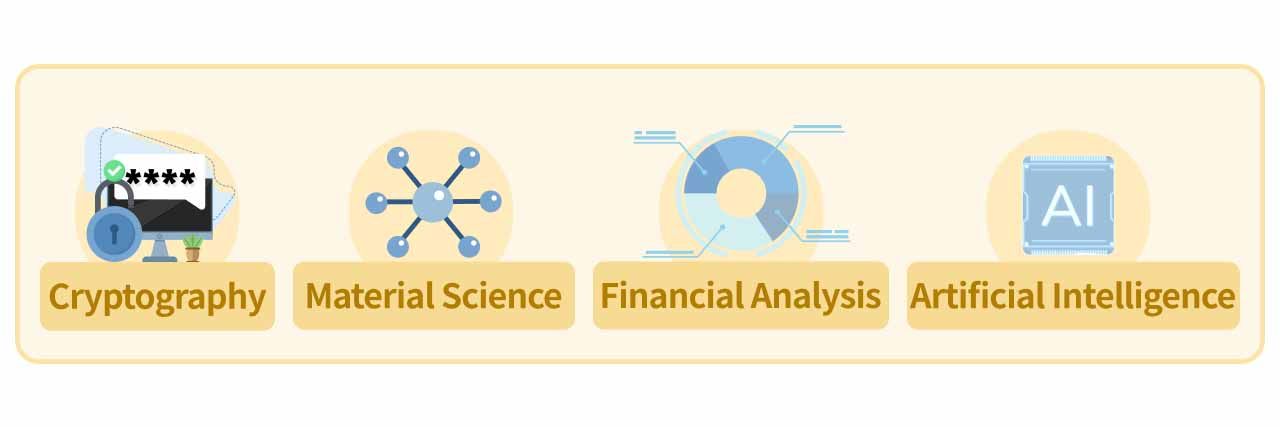Despite rapid technological advancements and significant improvements in computing power over the past few decades, conventional computers still struggle to solve certain extremely complex problems within a reasonable timeframe. However, the emergence of quantum computing offers a groundbreaking solution to these challenges.
For example, Google’s Sycamore quantum processor completed a computation in just 200 seconds—a task that would take a traditional supercomputer 10,000 years to accomplish. Quantum computing is expected to revolutionize industries by tackling problems that classical computers cannot efficiently handle.
But what exactly is quantum computing, and how will it impact the future? Below we will guide you through the fundamentals of quantum computers and their potential applications!
What Is a Quantum Computer?

A quantum computer is a revolutionary computing model based on the principles of quantum mechanics. Unlike traditional computers that rely on a binary system (0s and 1s), quantum computers use qubits (quantum bits) that can exist in both 0 and 1 states simultaneously—a phenomenon known as superposition.
Imagine you are searching for a specific book in a massive library. A traditional computer works like a librarian, following a step-by-step sorting algorithm, checking each book one by one until it finds the target. In contrast, a quantum computer acts like a team of assistants who can simultaneously scan all the bookshelves, instantly locating the desired book. This ability to process multiple possibilities at once significantly boosts computational efficiency.
Core Principles of Quantum Computing
Quantum computing is fundamentally different from classical computing due to two key quantum mechanical phenomena:
1. Quantum Superposition
While a classical bit can only be 0 or 1, a qubit can exist in both 0 and 1 states simultaneously. This allows quantum computers to perform multiple calculations at the same time, exponentially increasing processing power.
2. Quantum Entanglement
When two qubits become entangled, their states become interdependent—changing the state of one instantly affects the other, regardless of distance. This property allows quantum systems to process information with unparalleled efficiency.
Exponential Growth in Computing Power
If n qubits exist in a superposition state, they can simultaneously represent 2^n different values. By leveraging quantum entanglement, operations performed on one qubit immediately impact all connected qubits, enabling superior performance in optimization problems, cryptography, and AI training.
Current State & Technological Milestones
The foundation of quantum computing theory dates back to 1985, when David Deutsch proposed the universal quantum computing model. In 1994, Peter Shor developed a quantum algorithm for prime factorization, proving quantum computing's potential to disrupt cryptography.
Key Breakthroughs in Quantum Computing
- 2018: Google introduced the Bristlecone processor (72 qubits), surpassing a quantum volume of 2^10. The U.S. Congress passed the National Quantum Initiative Act, allocating $1.2 billion over five years to accelerate research.
- 2019: Google achieved "quantum supremacy", demonstrating that its 53-qubit Sycamore processor could complete a calculation in 200 seconds—a task that would take 10,000 years on a classical supercomputer.
- 2022: IBM unveiled Osprey (433 qubits), reaching a quantum volume of 2^15.
- 2025: Microsoft introduced Majorana 1, the world's first topological quantum chip, using Topoconductor materials to scale beyond 1 million qubits on a single chip.
Global Quantum Computing Competition
1. U.S.: Industry Leader in Technology & Funding
IBM, Google, and Microsoft dominate the field, holding a vast portfolio of quantum patents. In 2024, the U.S. government reauthorized the National Quantum Initiative Act, raising annual R&D funding to $8 billion, reflecting its strategic emphasis on quantum technology.
2. China & EU: Competing for Quantum Dominance
China has invested heavily in quantum research, fostering close collaboration between academia and industry to accelerate quantum chip development. The EU has established the Quantum Flagship, with 20 member states signing the Quantum Cooperation Agreement and launching the EuroHPC JU initiative, which is deploying Europe's first quantum computers across six research centers.
Potential Applications of Quantum Computing

Cryptography
Current encryption methods—such as RSA and ECC—rely on the computational difficulty of prime factorization and discrete logarithms. These encryption schemes are secure only because classical computers cannot solve them efficiently. However, Shor’s algorithm enables quantum computers to factor large numbers exponentially faster, posing a serious threat to current cybersecurity systems. This has prompted a global race to develop post-quantum cryptography.
At the same time, quantum technology offers new security solutions: Quantum Key Distribution (QKD). A cryptographic method that uses quantum mechanics to enable unbreakable encryption, ensuring secure communications resistant to hacking attempts.
Material Science
Quantum computers can simulate complex molecular structures, facilitating breakthroughs in material science and pharmaceutical research.
- Aerospace & Energy: Quantum computing can optimize lightweight, high-strength alloys for aircraft and improve battery efficiency for energy storage.
- Pharmaceuticals: Companies like Roche and Quantinuum use quantum simulations to accelerate drug discovery. For example: Quantum molecular dynamics successfully predicted COVID-19 spike protein mutations, expediting vaccine design. Alzheimer’s Treatment: Quantum simulations identified drug candidates that improved blood-brain barrier penetration by 3x, reducing preclinical trial timelines from 18 months to 6 weeks.
Financial Analysis
Financial institutions can leverage quantum computing for market simulations, risk modeling, and optimizing investment portfolios.
For example, quantum computing can analyze vast amounts of market data and use high-efficiency Monte Carlo simulations to predict market fluctuations while simultaneously processing multiple risk assessment scenarios to rapidly price derivatives. Additionally, JPMorgan Chase has leveraged quantum computing to optimize asset allocation algorithms, improving portfolio optimization efficiency and enabling faster rebalancing.
These applications highlight the immense potential of quantum computing in finance, with the ability to transform future investment strategies and risk management practices.
Artificial Intelligence
Quantum computing can accelerate AI model training and inference, providing faster and more precise analytical capabilities.
For example, Google’s Sycamore quantum processor has been used in machine learning experiments, significantly speeding up specific AI training tasks. Additionally, IBM’s quantum cloud service, IBM Quantum, enables research institutions to explore Quantum-Enhanced Learning, optimizing data classification and pattern recognition.
The deep integration of quantum computing and artificial intelligence is fostering new technological collaboration models.
Challenges & Technical Barriers
Despite its promise, quantum computing faces major hurdles before achieving widespread adoption:
Hardware Stability
Qubits are extremely sensitive to external environments and can be easily affected by temperature fluctuations, electromagnetic interference, and other factors, leading to decoherence. Decoherence causes the gradual degradation of quantum states, which impacts the accuracy and reliability of computations. Therefore, one of the key challenges in achieving stable quantum computing is enhancing qubit stability and extending coherence time to maintain computational integrity.
Error Correction Limitations
To ensure the accurate execution of complex quantum algorithms, an effective Quantum Error Correction (QEC) mechanism is essential. As mentioned earlier, qubits are highly sensitive to environmental disturbances, making them prone to errors. When quantum states experience disruptions, specialized QEC techniques are needed to correct them. However, current quantum computers still face significant challenges in error correction. The error rate remains high, and existing QEC methods are not yet mature enough to fully mitigate intrinsic quantum system errors.
Without a highly efficient error correction system, quantum algorithms may suffer from error accumulation, leading to loss of accuracy and unreliable computation results.
Scaling Up Quantum Computing
Currently, quantum computing technology is still in its early stages of development, with most systems remaining at the experimental testing and validation phase.
While some companies have begun exploring its commercial potential, widespread adoption is still a long way off. Tech giants like Google and Microsoft are actively investing in quantum computing research, particularly in artificial intelligence and cryptography applications.
Although these efforts are still in their infancy, they demonstrate a clear trend toward the practical implementation of quantum computing.
Conclusion
As Google, IBM, and Microsoft continue investing in quantum research, we can expect technological barriers to be gradually overcome, leading to broader industry applications.
Quantum computing represents not just a technological revolution but a fundamental shift in how we process information. While commercialization remains a long-term challenge, growing investment could accelerate groundbreaking advancements, bringing us closer to a quantum-powered future.
